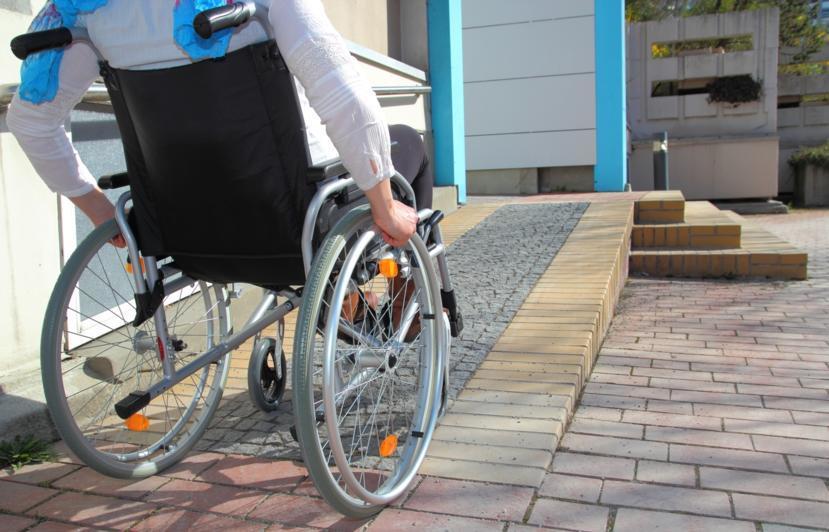Managing Muscular Dystrophy

If you're someone who has muscular dystrophy or knows someone who does, then you'll need to make sure that you know how to care for yourself to stay as comfortable as you possibly can. Unfortunately, while this condition has no cure yet, there are treatments and remedies you can do to reduce symptoms and stay as healthy as possible. When managing muscular dystrophy, you shouldn't only know about the medications and treatments your doctor prescribes, but also know how to make a few lifestyle changes as well as to avoid putting too much strain on your body.
Treatment and Prescription
Unfortunately, muscle dystrophy has no cure. But to slow down its course, your doctor would prescribe medications as well as therapy. There have also been studies of gene therapy to help insert a type of gene to assist those who suffer from Duchenne and Becker muscular dystrophy. Today, there is now research regarding muscle-building medicines that can either slow down or reverse the progression of the condition, looking into creatine and glutamine to help produce and store muscle energy.
Medications include:
Corticosteroids for those who have Duchenne muscular dystrophy, which slows down the destruction of muscles. Deflazacort helps treat it as well, known to help retain muscle strength and maintain your ability to walk. Phenytoin and Mexiletine help with muscle relaxation in those who have Myotonic muscular dystrophy. Other medications include those that would treat heart-related conditions that are caused by the disease.
Making Lifestyle Changes
There are various life changes you will need to make to manage muscular dystrophy and keep yourself comfortable during the difficult times ahead.
- The first thing you must focus on is to stop any form of strenuous work or sports that put stress on your muscles. You will need to go into an exercise regime that focuses more on stretching and low-intensity activities that help stimulate your body and slow down the symptoms. Your doctor will also want you to undergo physical therapy to help lengthen your muscles and take preventive measures in slowing down the symptoms.
- Diet is another crucial factor. You will need to make sure that you take the right vitamins and minerals to help improve muscle development and grip strength. Go for foods rich in vitamin E and selenium, which are found in almonds, Brazil nuts, turkey, tuna, chicken, and avocados. Vitamin D and fish oil are also essential in keeping your bones strong.
- If you have pain or inflammation due to muscular dystrophy, then you can try baking soda to help relieve the pain. You will also need to stop any vices that would further weaken your immune systems, such as smoking or alcohol.
How to Care for Someone with Muscular Dystrophy
Caring for yourself or loved ones who have muscular dystrophy may be difficult, as it can take a toll on both emotional and physical health. That's why it's best to give your whole support and make sure that the patient has the professional care he or she needs, as well as the emotional support from his or her loved ones. You might have to give your home a renovation, ensuring that it has easy access to everything for your loved one to roam around without risk of injury easily. You may also need to start helping the patient do everyday tasks, such as feeding or bathing. Some caretakers will be able to teach and help you out with that. As the condition slowly progresses, the most important thing you can give him would be support, providing the patient with a group of counselors and ensuring that his loved ones are by his side.
A Brief Overview on Muscular Dystrophy
Muscular dystrophy is a group of illnesses that would cause the loss and weakness of muscle mass. It happens due to abnormal genes that interfere with your protein productions that are necessary to form tissue. There are various types of muscular dystrophy that can occur during childhood, with other forms showing symptoms only during adulthood:
- Duchenne Muscular Dystrophy would mostly occur in boys, with children starting to have symptoms between one to three years old.
- Myotonic Dystrophy affects the smaller muscles first, such as the face and neck. It can occur anytime in a person's lifetime, getting worse slowly over time.
- Facioscapulohumeral Muscular Dystrophy affects both men and women, starting with childhood but with the symptoms process slowly and show during adulthood.
- Becker Muscular Dystrophy would mostly affect boys, beginning as a child, and it is relatively mild. They will have difficulty running or climbing stairs, finding it hard to lift objects as they grow older.
- Limb-Girdle Muscular Dystrophy is the weakness in bigger muscle groups, affecting the hip girdle first, progressing to the shoulders. It makes it difficult to lift objects, run, or to stand up from a low seat.
- Oculopharyngeal Muscular Dystrophy usually happens to those who are about 50 to 60 years old, affecting the eyes and throat. Because of this, your eyelids will droop, and it would be difficult to swallow solid food.
- Emery-Dreifuss Muscular Dystrophy is a serious condition that affects a person during childhood or adolescence, causing progressive muscle weakness, and it can cause a heart block as it begins to worsen. Because of this, the person affected by this type of MD would have a shortened lifespan.
This is a long-term disease that will affect the quality of your life with no cure yet.
Causes, Symptoms, and Diagnosis of Muscular Dystrophy
Like mentioned, muscular dystrophy is caused by a defective gene that is supposed to protect your muscle fibers from damage. It is a genetic mutation, mostly inherited. Sometimes it can happen spontaneously in the mother's egg or embryo, passing it on to the next generations. The main symptoms of muscular dystrophy include weakness and pain around the muscular area, with difficulty in moving or running regular errands. It can progress as time passes by, with increased falling or clumsiness. To diagnose muscular dystrophy, various tests are made, such as enzyme tests, electromyography, genetic testing, muscle biopsies, as well as heart and lung monitoring tests. These help to check your muscle and organ function to diagnose what type of muscular dystrophy you have.
In Conclusion
When it comes to managing muscular dystrophy, it may require a few lifestyle changes to keep yourself comfortable. It affects your muscles and the way you move, so it's best to have someone you love to care for and support you throughout the symptoms you may experience. With the proper treatment and medication, you'll be able to manage and control the symptoms correctly. Now that you have taken the first step to understand what it's like to live with muscular dystrophy, you'll be able to manage it properly, may it be you or your loved one suffering from the condition.















